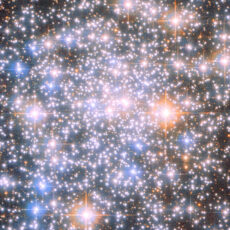
NASA / ESA’s Hubble Space Telescope captured a galaxy, classified as SDSS J103512.07+461412.2, located 23 million light-years from Earth that looks like a streak of dust in the constellation Ursa Major. You can also see a wide and very flat spiral galaxy surrounded by various different-shaped small galaxies, while one star with four prominent diffraction spikes really stands out.

SDSS J103512.07+461412.2 itself is essentially a broad horizontal streak of small stars that extend to the left and right from a dense and bright core of stars in the center. Astronomers observed this galaxy as part of the Sloan Digital Sky Survey (SDSS), a large survey that began in 2000 with the goal of observing and cataloguing vast numbers of astronomical objects. To date, it has managed to record several hundred million astronomical objects.
- LEGO NASA Space Set - This adult LEGO set features the Space Shuttle Discovery and the Hubble Space Telescope from NASA’s 1990 STS-31 mission,...
- Solar System Exploration - Unlock the mysteries of our solar system with this engaging 2,354-piece project, packed with authentic details and...
- Shuttle Features Galore - The space shuttle model has an opening payload bay, retractable landing gear, opening cockpit, moving elevons, space arm,...
The SDSS J103512.07+461412.2 name simply tells us that the galaxy can be found 10 hours, 35 minutes and 12 seconds east of the zero-hour point on the celestial equator, and just over 46 degrees to the north of the celestial equator. So that lengthy name is really an identifier and a detailed location in one!,” said the European Space Agency.










